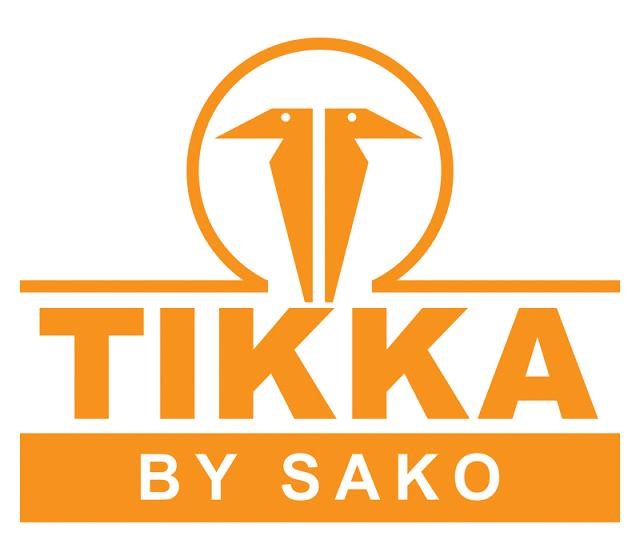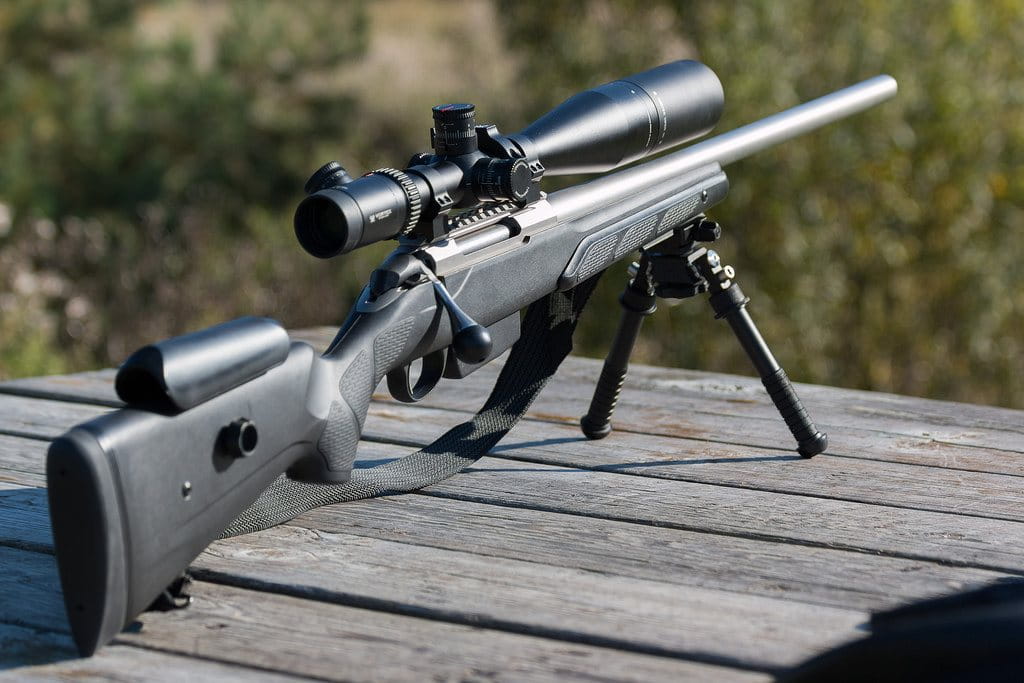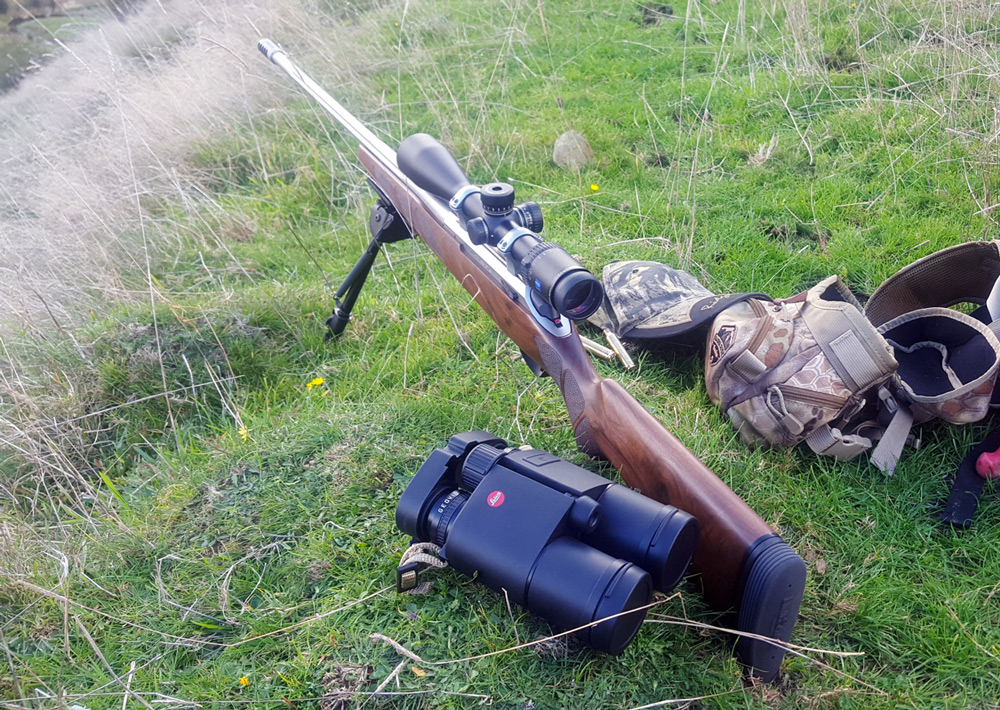

These rifles are similar with the T3X upgrades, primarily focused on stocks and parts commonality between the two guns The T3X includes a modular stock, improved grip, improved recoil pad, quieter stock, redesigned ejection port, additional screw holes on the receiver, metal bolt shroud and steel recoil lug. The T3 (reviewed here) is being phased out by the T3X. The T3 uses an aluminum lug which can be deformed, the T3X improves this design by using steel instead of an aluminum lug. The Tikka uses a floating recoil lug that slips into the stock and engages a slot in the bottom of the receiver (just like a Savage Axis). It is also drilled and tapped for an aftermarket rail (the T3x has additional threaded holes). The action includes an integral rail for use with direct mount scope rings (which are provided- nice!). The bolt operation is smooth most likely due to the polished finish on the bolt. It has a 75 degree bolt lift which is a nice change from the 90 degree usually encountered on two-lug bolt action rifles.

The T3 uses a SAKO extractor and a constant tension ejector. It should serve as an example to Remington as to what can be accomplished if you try. Breaking at a crisp 3 pounds 7.8 ounces it is the best factory trigger I’ve experienced on a entry level bolt action rifle to date. The T3 feeds from a polymer single stack magazine (above).
Tikka vs sauer full#
At full boat MSRP pricing, they can do better and with the T3X, they did (more on that in a bit). Does the plastic look a little pedestrian at times- yes- but for what I paid, I’ll deal with it. Tikka did respond to consumers and change this part to metal in the T3X line. While I can deal with the plastic trigger guard and floor plate (the Steyr SBS and Scout rifles went there decades ago) the plastic bolt shroud seems lazy and uninspired. The use of plastic keeps the price down, and to a generation of shooters who grew up on Glocks, has the advantage of never rusting. Fast pointing and easy to the shoulder, it seems like it would be at home on any hunt. Steel parts are finished in matte blue with the bolt polished to a shine. The thin 22.4″ spotter contour, cold hammer-forged barrel is housed in a black plastic stock with a plastic trigger guard and bottom metal. The T3 Lite is geared towards the hunting market and is equipped as such. Tikka T3 in hand I couldn’t wait to start my review. My test rifle is the cheapest T3 I could find. During the course of this post, I’ll explain the differences between them. Besides the obvious differences in stocks and barrels, my comments should be applicable across the entire T3 product line to include the T3X. For purposes of this post, I’ll be working with a Tikka T3 Lite chambered in 22-250 Remington.

Note both of these readings make solid points about the rifle, and in Chuck Hawks’ case, the state of the “outdoor media” is absolutely spot on (trust me, believe every word of it). Contrast that to this one from Chuck Hawks, “Modern hunting rifles and the outdoor media”, here. For an example of love, take a look at KRG’s white paper, “The case for and against the Tikka TS”, here. Rather than rehash some very good work, let’s take a minute to look at two of my favorite T3 reviews one from Kinetic Research Group (KRG) and the other from Chuck Hawks.

One of the difficulties in reviewing rifles that have been on the market for a number of years is that shooters have some sort of an idea of how they perform and what to expect. In this post, we are going to look at the T3 and T3X. Known for offering accuracy at a reasonable price, the T3 and T3X have developed a strong following among US shooters.
Tikka vs sauer upgrade#
The heart of their line is the T3 (or T3X the recent upgrade with minor changes) bolt action rifle. Note, SAKO is owned by Beretta, an Italian company (for those of you keeping score both Italy and Finland allied themselves with the Axis powers during WWII). Since that time, SAKO has been using Tikka as it’s economy line. In 1981 they partnered with SAKO to work on a complete firearm. Tikka has been producing firearm components since 1918.


 0 kommentar(er)
0 kommentar(er)
